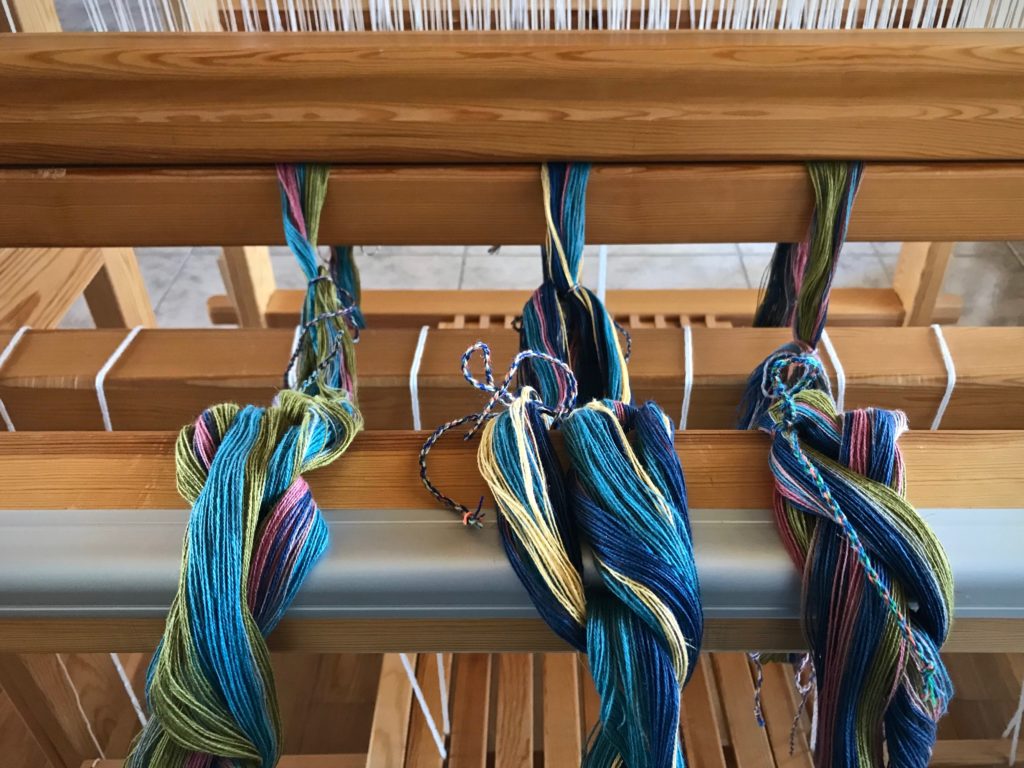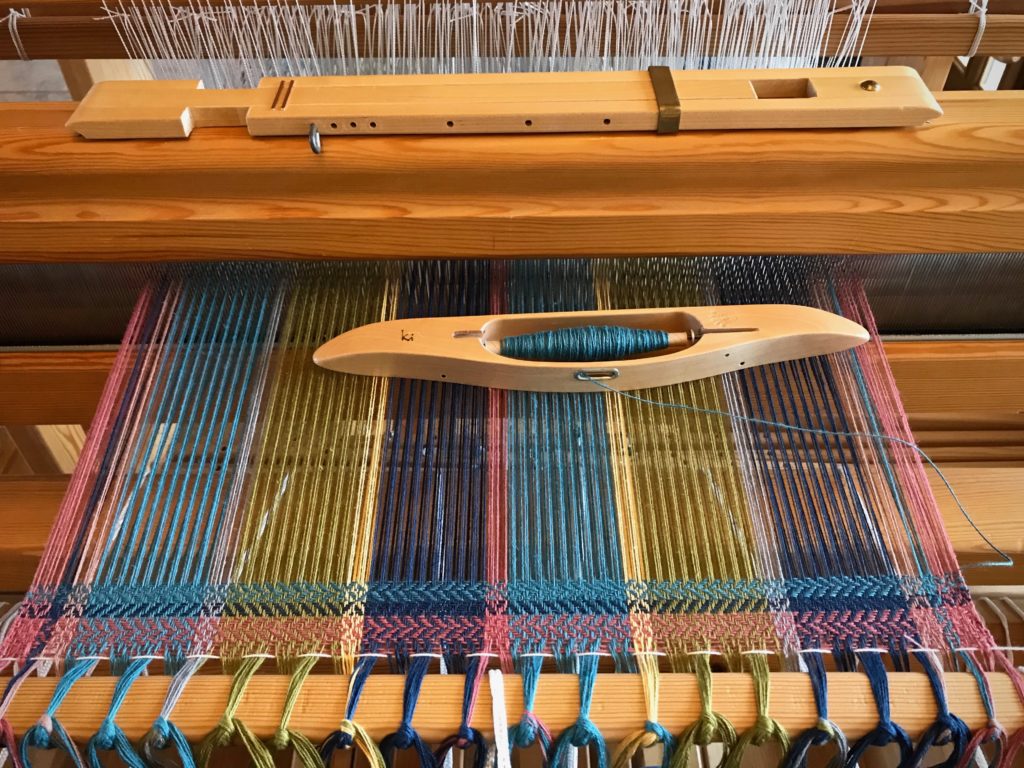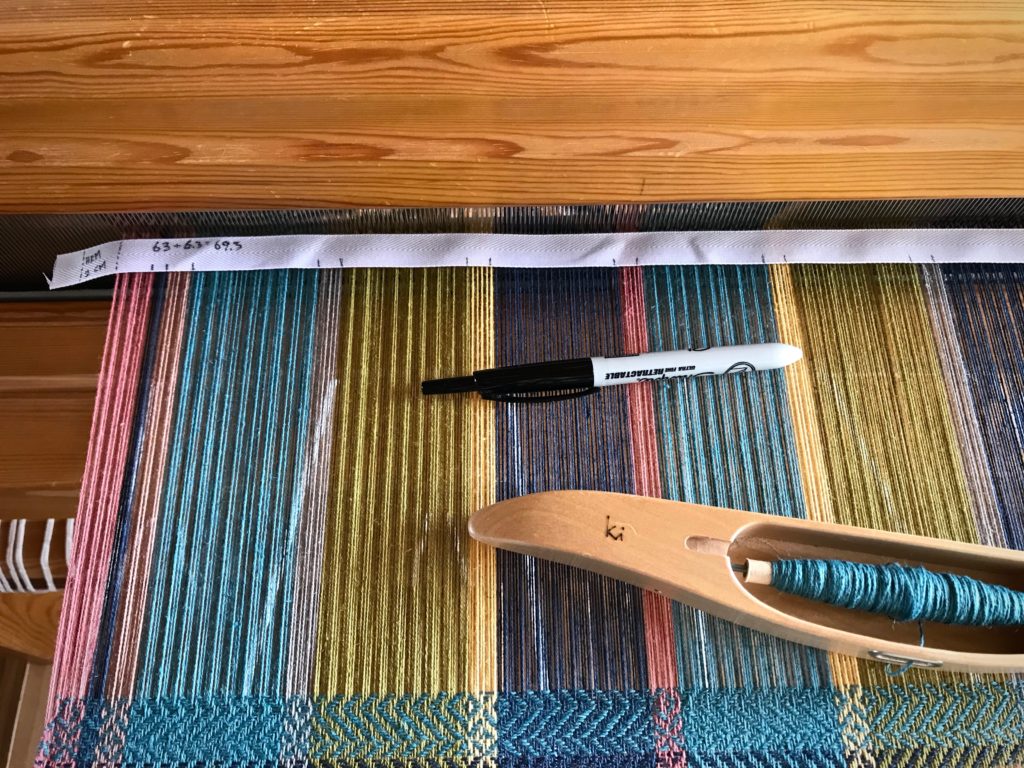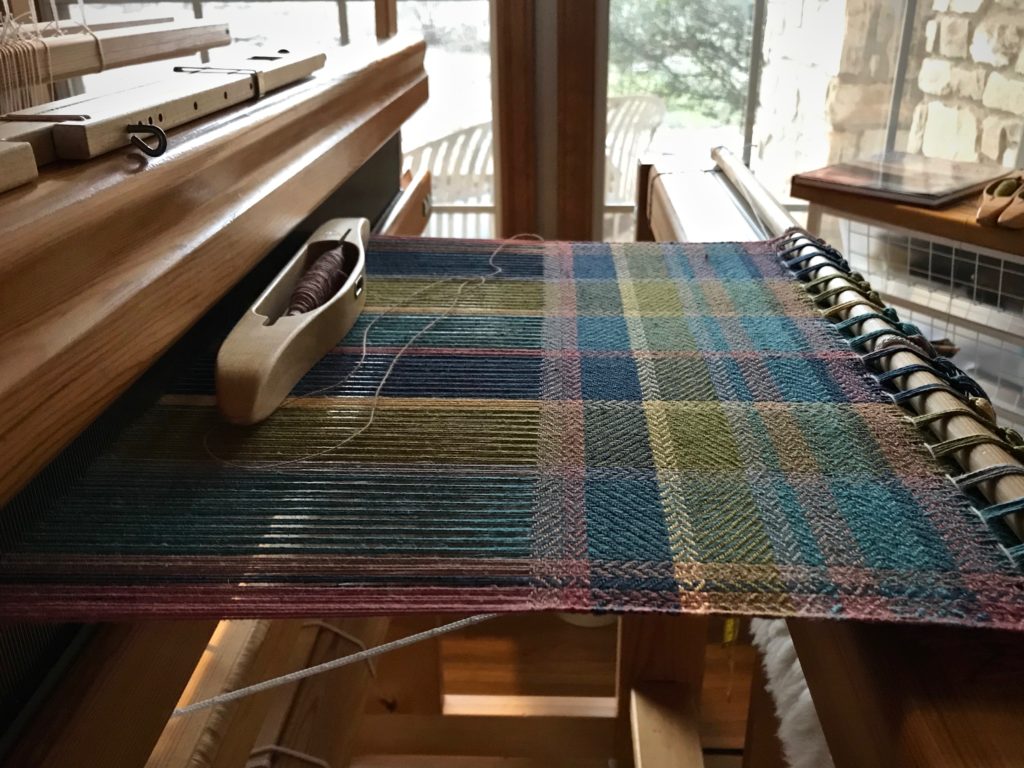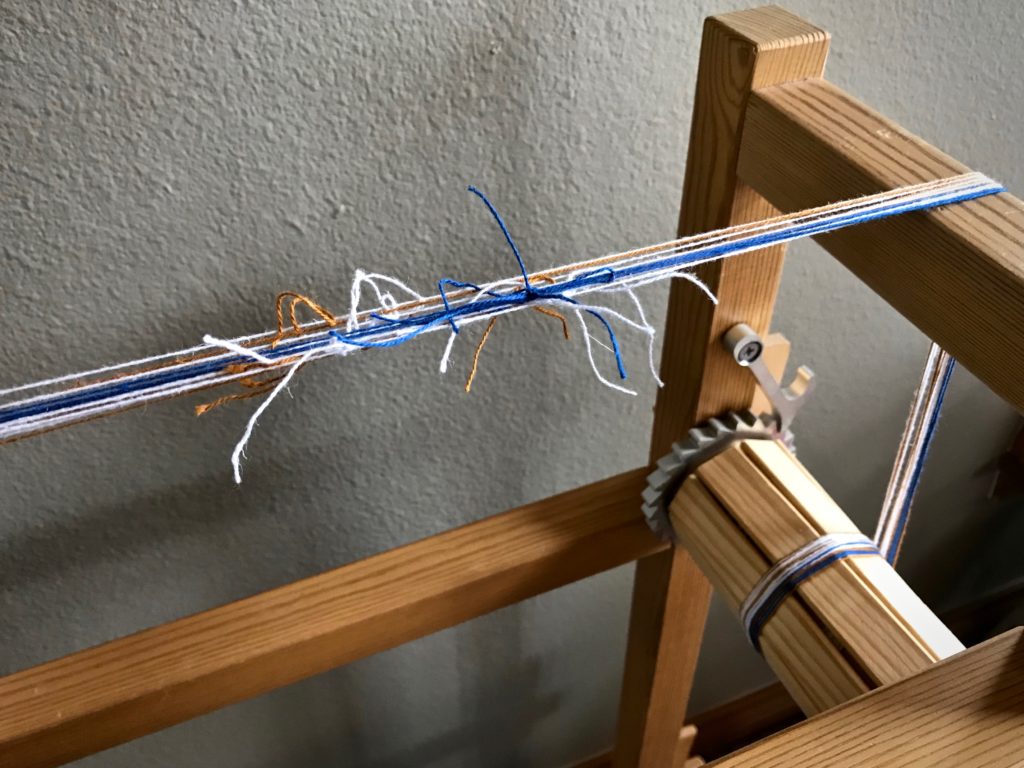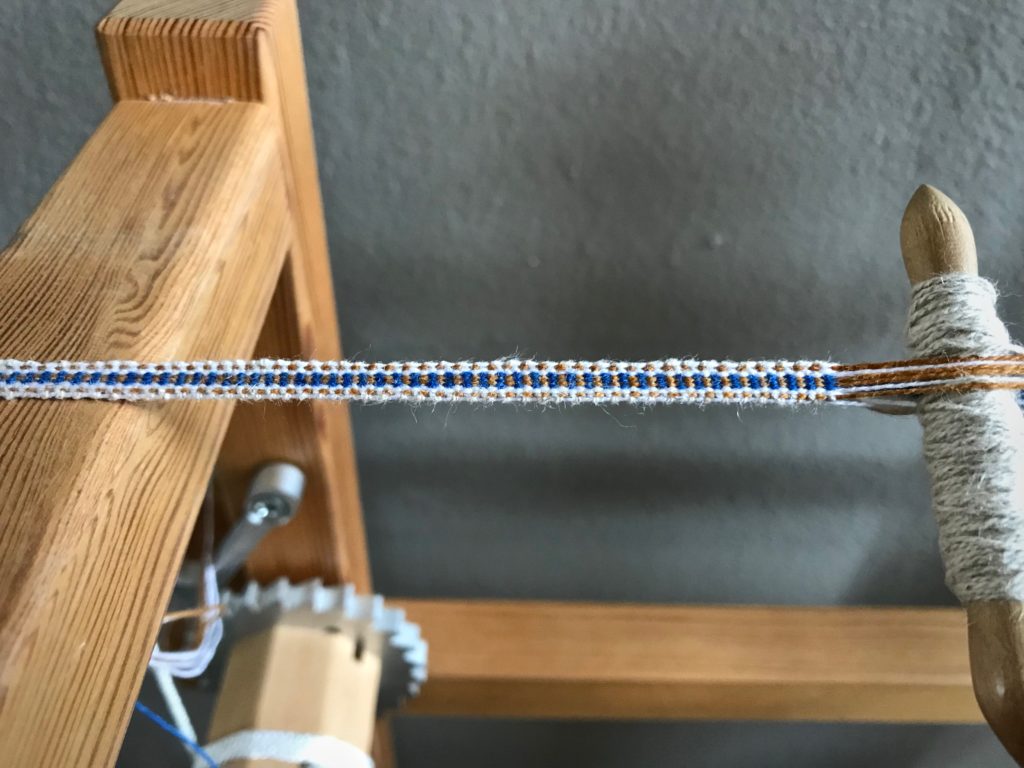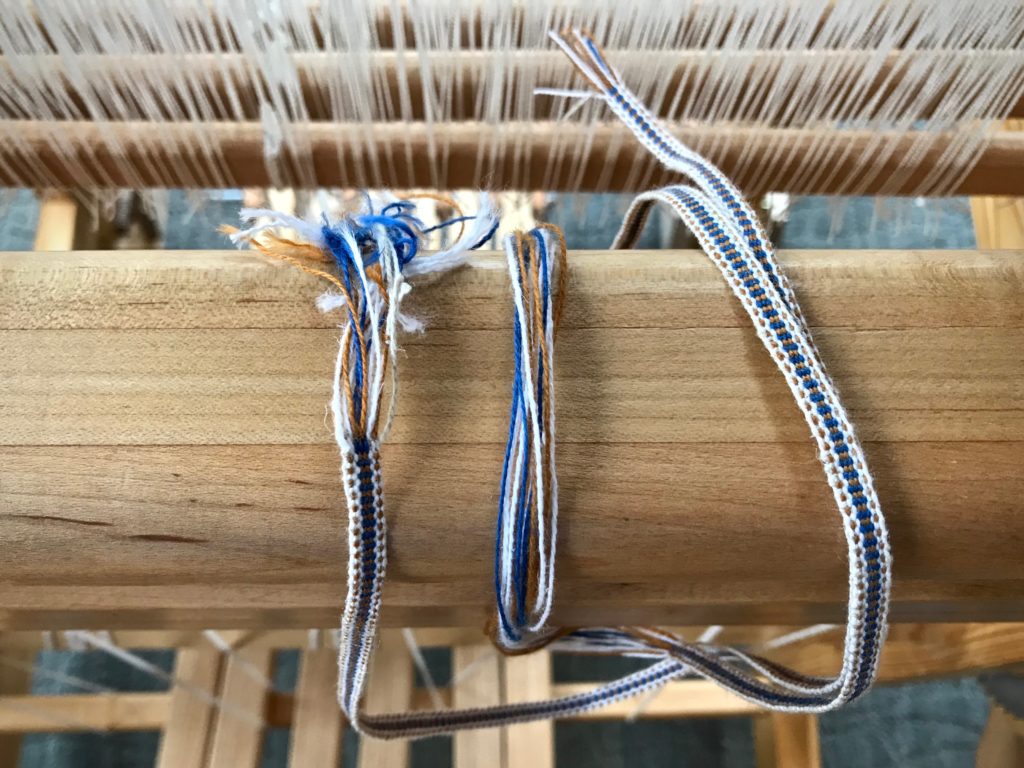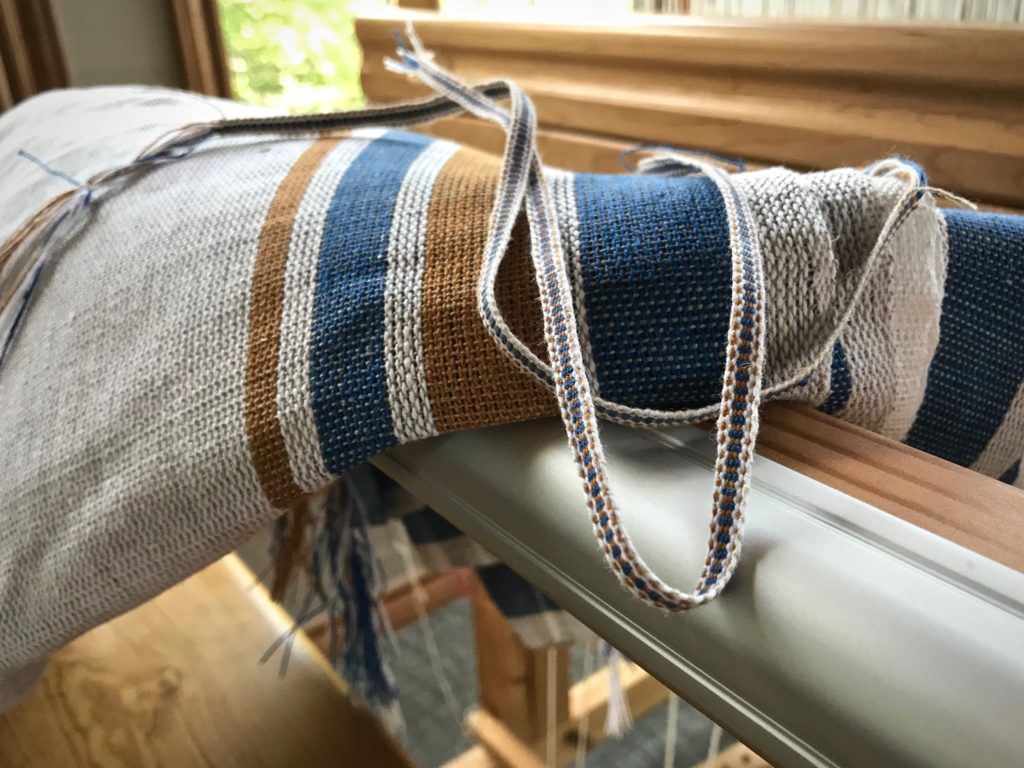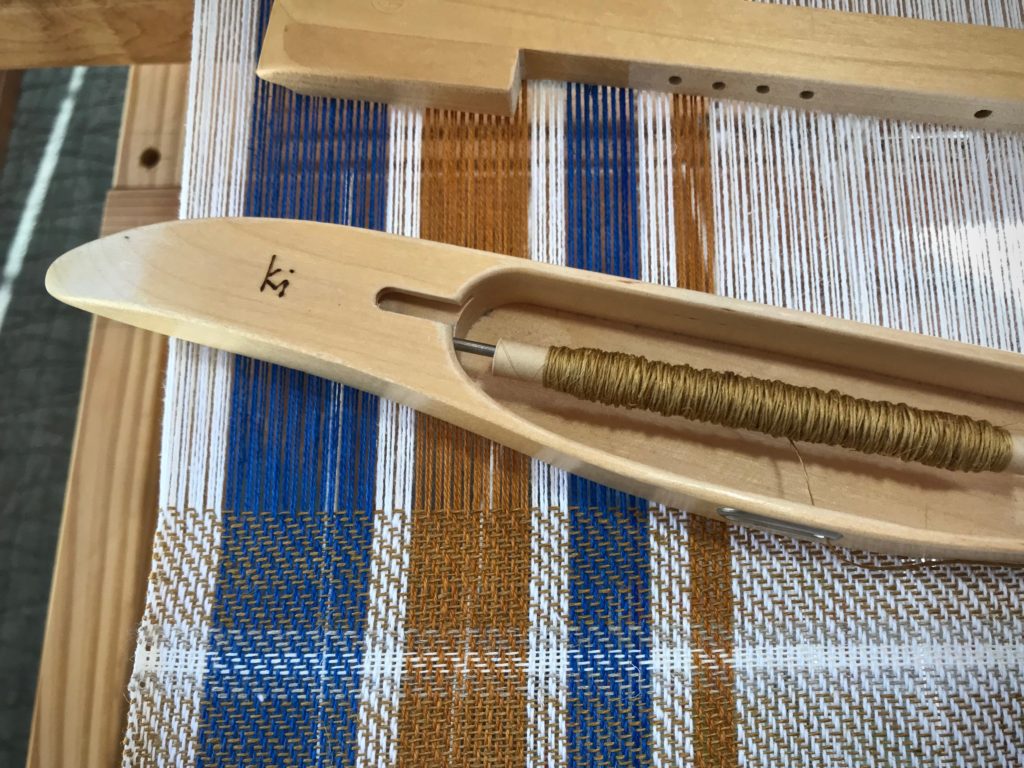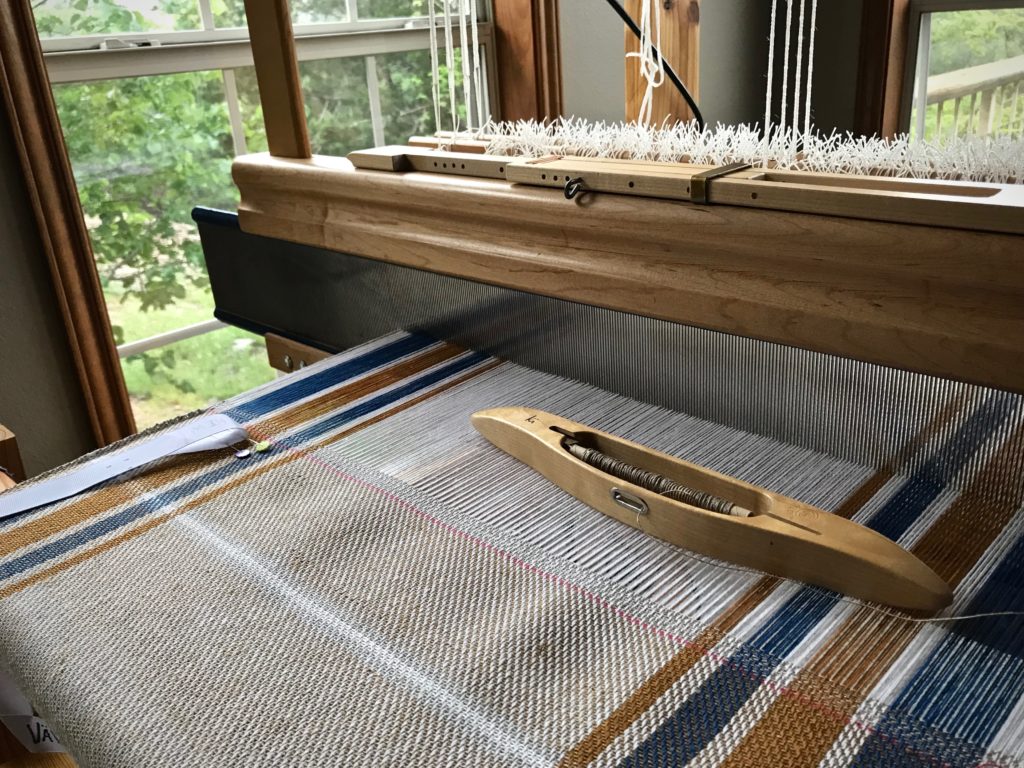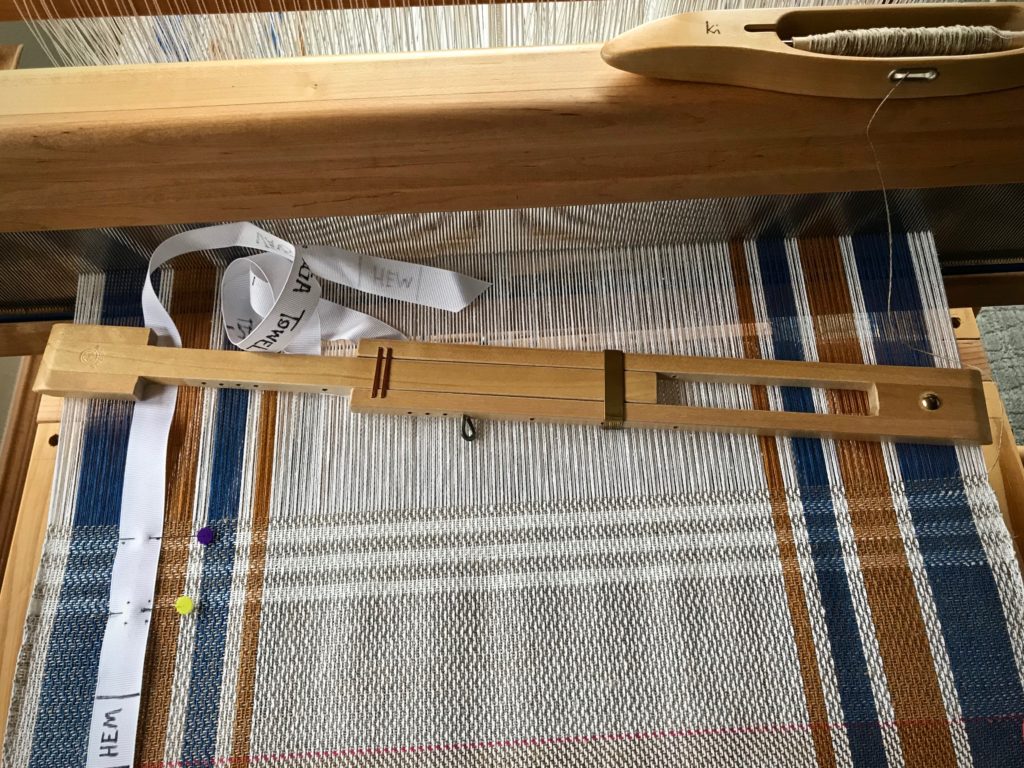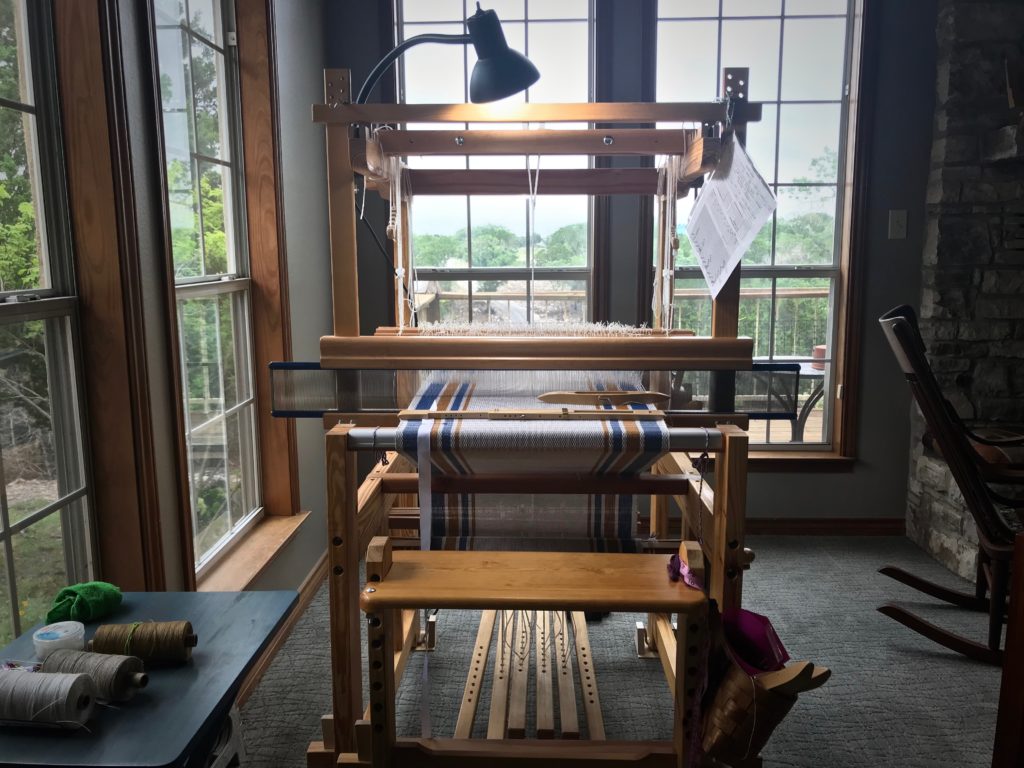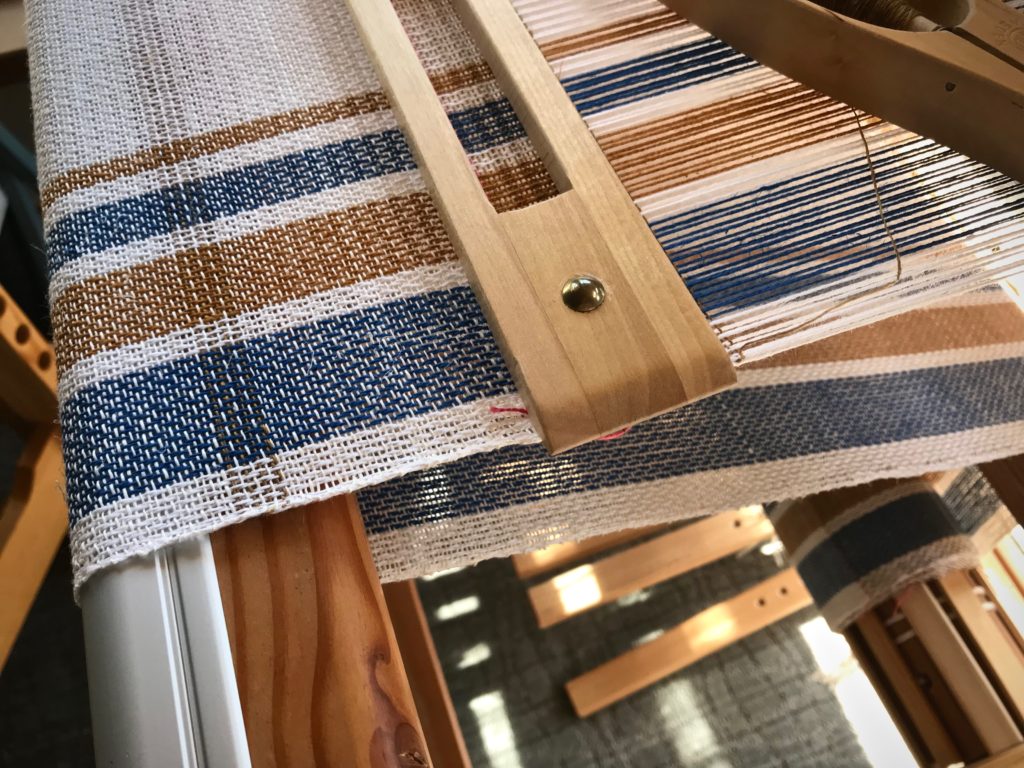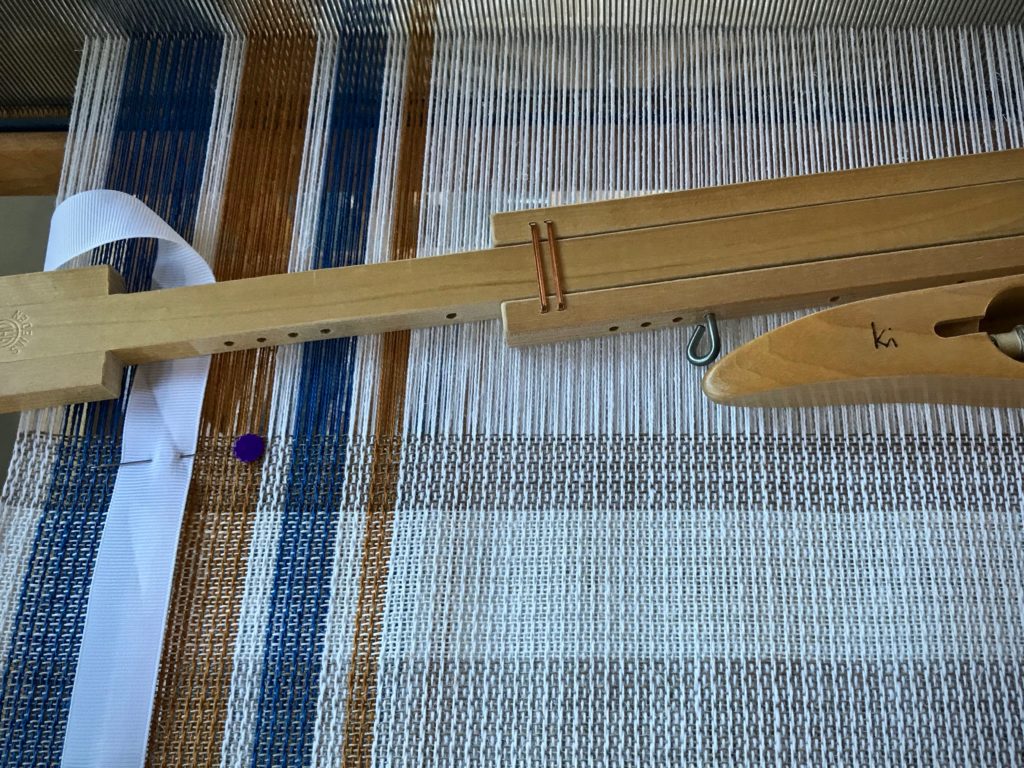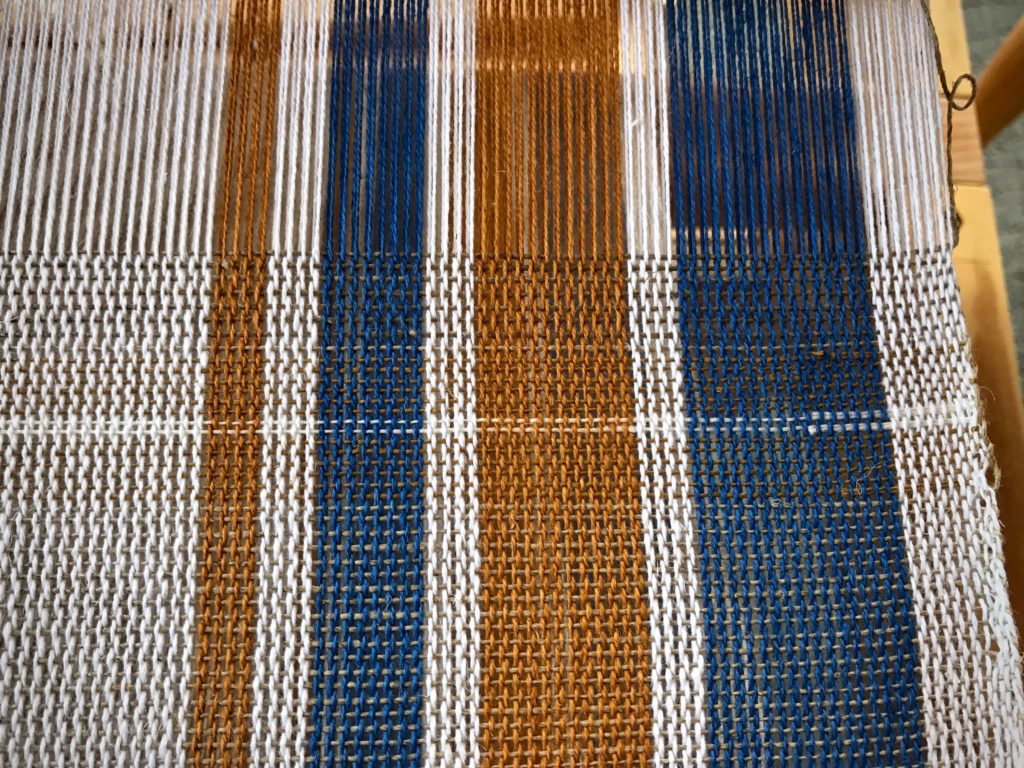The reel spins ‘round, ‘round, ‘round one way, and then ‘round, ‘round, ‘round back the other way. Rhythmic, mesmerizing, and strangely soothing. Counting, as I wind two ends at a time, I find myself whispering “2, 4, 6, 8, 10, 12, ….” The warping reel is one of my favorite pieces of equipment. This warp has seven colors of 22/2 Cottolin for bath towels which are to accompany the hand towels I recently made. I am winding this in four bouts, and there are different color changes in each bout.
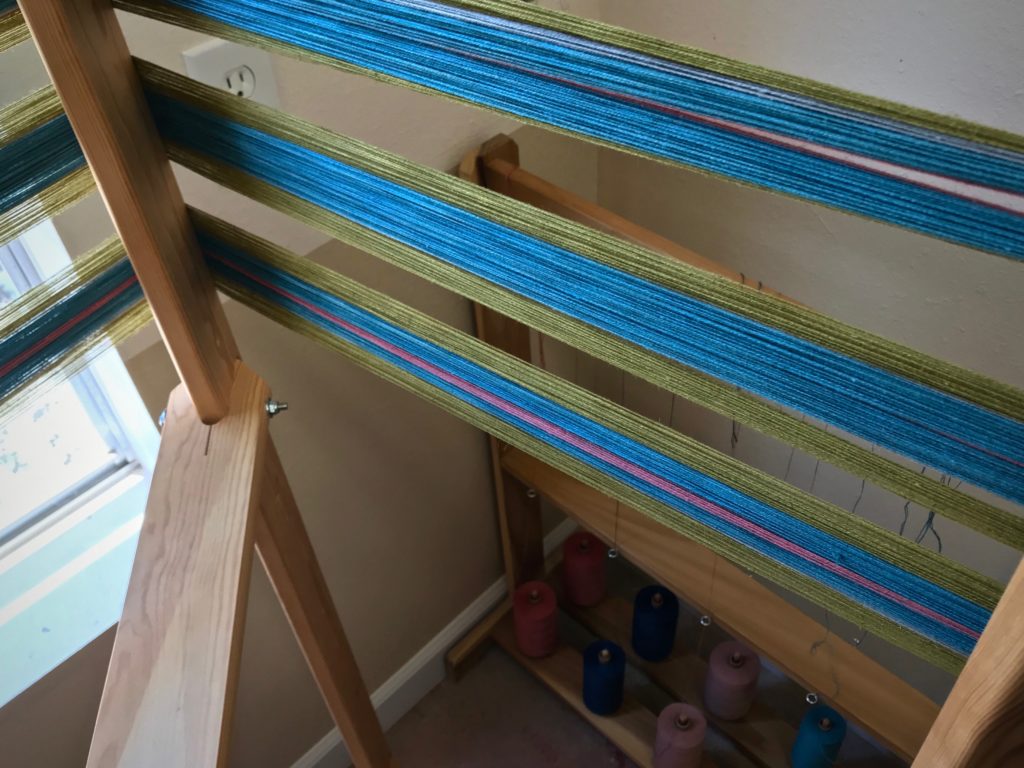
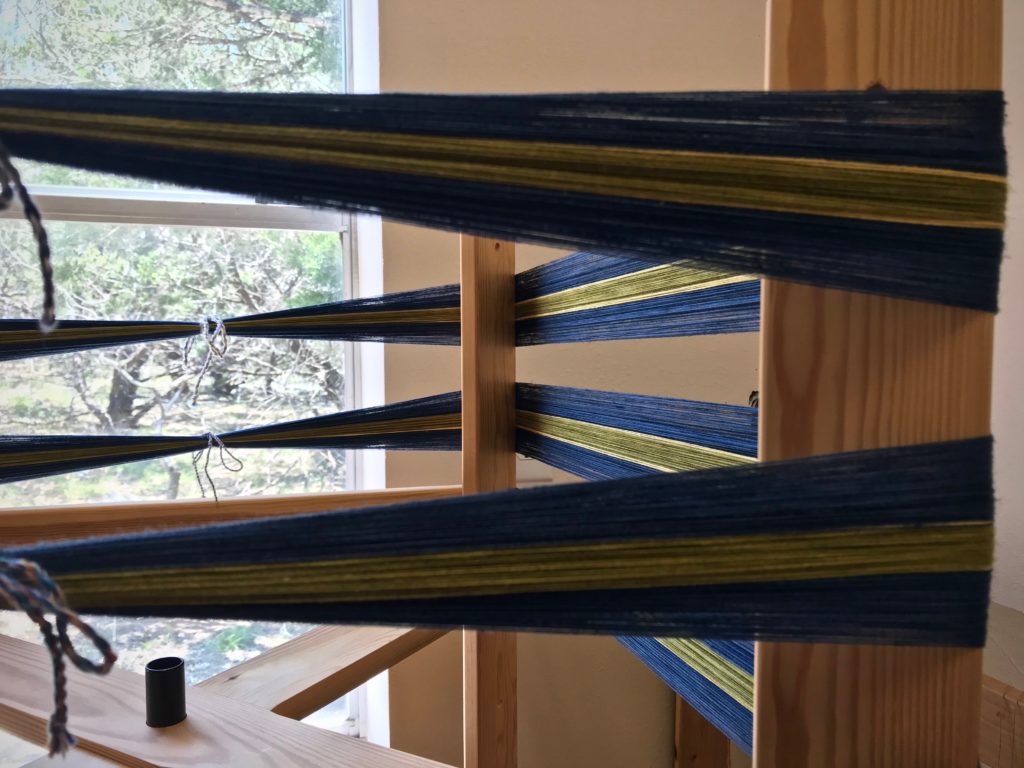
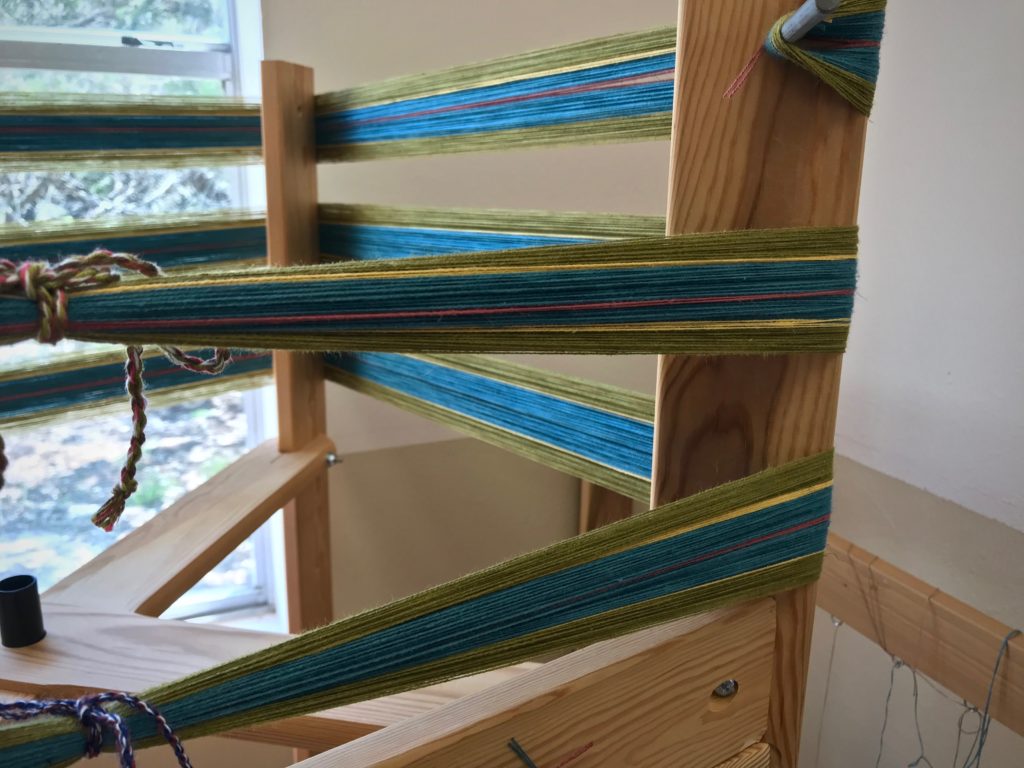
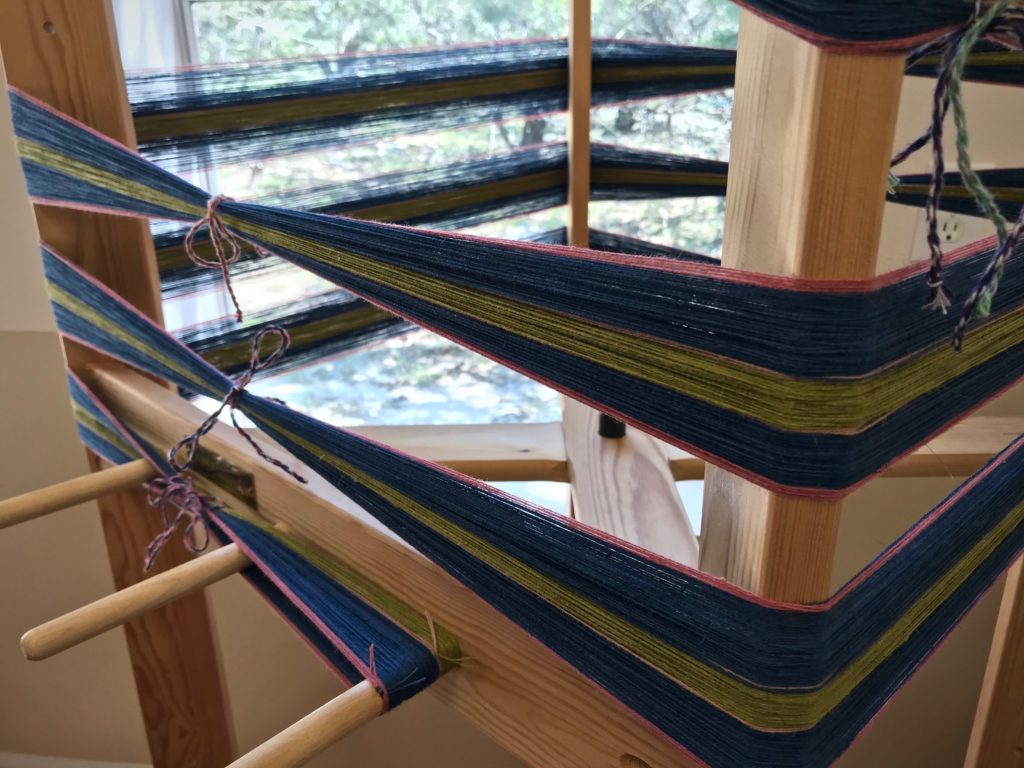
I marvel at the combination of thread colors as I chain each bout off the reel. The warp chains look beautiful. They always do. Warp chains are dreams in the making, where anything is possible. Haven’t you dreamt of handwoven bath towels?
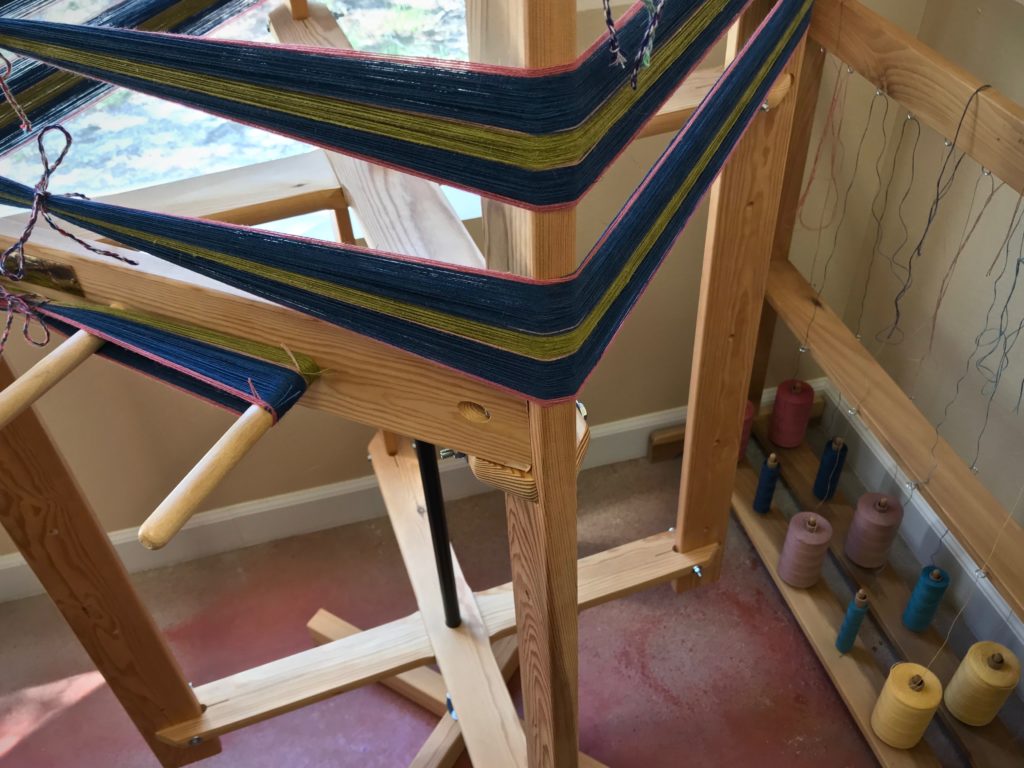
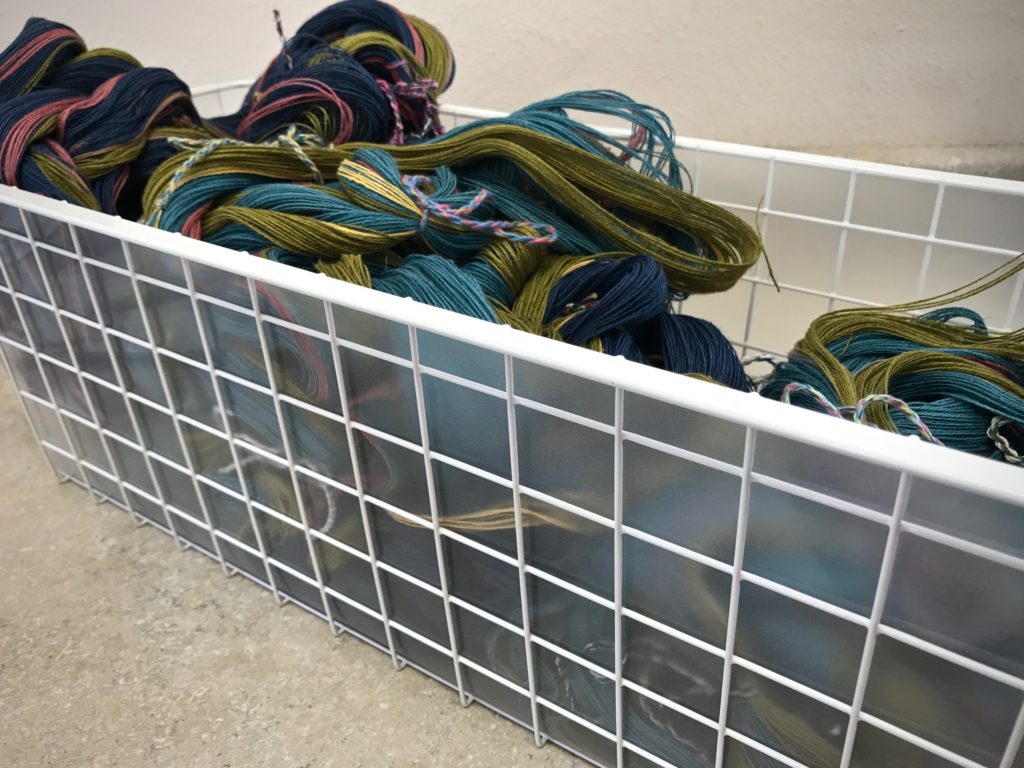
When we listen closely, we can hear the inaudible. Our hearts can hear the softest whisper. “2, 4, 6, 8, 10, 12, …” Even the hairs on our head are numbered by the Grand Weaver who planned our existence. Our days are numbered, as well. And when our heart is listening, we can hear the quiet whisper of the Lord Jesus, “Are you weary and burdened? Come to me, and I will give you rest.”
May you listen for the softest whisper.
Gently,
Karen

